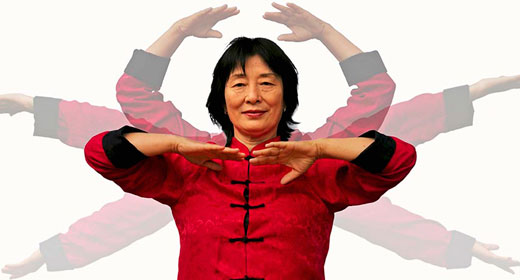In 1968, Carlos Castaneda wrote The Teachings of Don Juan, the first of a series of books de-scribing his training with a Yaqui “Man of Knowledge” named Don Juan Matus…
Castaneda’s books have sold more than 28 million copies, and his work was the first glimpse into a vast and ancient body of knowledge developed in what is now Mexico by its indigenous peoples. Through his work we were introduced to a group of ancient Mexicans, known as the Toltecs, who developed and practiced the art of Nahualism.
In 1997 another Mexican author, Don Miguel Ruiz from the Toltec lineage published his best sell-ing book The Four Agreements. Ruiz’s work, is written as a simple guide to help change the hu-man mind, within its simplicity one can appreciate the profound wisdom behind it.
According to this Ancient Mexican tradition, such knowledge should be kept secret for 500 years after the arrival of the Spanish conquistadors. Based on the information being revealed by Sergio Magaña an initiate and teacher of the Aztec and Toltec tradition: “It is at this time in history, the calendars indicate that human consciousness can shift focus from an awareness oriented around the needs of the individual to a consciousness that prioritizes the needs of the whole. It is a shift from orienting oneself in the world externally — What do I have? What do I look like? Who loves me? to a deeper understanding of Self — Who am I? How do my emotions work? What is my pur-pose? What is my relationship to the earth? This inward focus is also about our relationship to the Universe. By asking these questions and going inside we also become deeply aware of our con-nection to the cosmos.”
Following this mandate to open into the world the sacred knowledge also known as the return of Quetzalcoatl, Mexican author, Sergio Magaña (Ocelocoyotl), has recently published his second book with Hay House, called, The Toltec Secret, Dreaming Practices of the Ancient Mexicans, where he expands on the body of knowledge developed by the Toltecs, called nahualism. Accord-ing to Sergio and his teachers, “Nahualism is the art of being awake while sleeping and using the perceptions of the Nahual while awake.”
In this fascinating interview with SuperConsciousness, Sergio Magaña tells us that the main pur-pose of his tradition, has been to learn and master the art of planting dreams , also called sowing dreams in which you put your intentions. “That is our main discipline, that is named Mexicatzin – the venerable Mexihca. It doesn’t mean Mexican. Mexihca refers to the people that recognize the effect of the moon and of their dreams.”
Sergio Magaña (Ocelocoyotl), is a famous Mexican healer who has been initiated into the 5,000-year-old Toltec lineage of nahualism and the Tol lineage of dreaming knowledge. Sergio has been appointed head of a prestigious project with Club UNESCO for the Protection of Intangible Herit-age of Ancient Civilizations.
SuperConsciousness: Can you tell us about your background, and how did you come across this body of knowledge, and where does it come from?
Sergio Magaña: I am originally from a very traditional Catholic family. My mother worked when I was a kid, so I was really raised by my nanny, and she was the daughter of an Otomi healer “curandero” and she was supposed to be the next one in the line of healers of her Otomi village. But she had problems with her husband and had to escape from the town and that’s how she ended up in Mexico City.
She began working in my family’s house, taking care of my brother’s, I am the youngest so I wasn’t even born at the time she came to my house. When I was born, I became like the son that she couldn’t have. She gave me a lot of love but because she was the daughter of a curandero, I grew up with half of my mind in a traditional and science based family and the other half in this magic world. For example, when I was very young instead of giving me an aspirin or something like that for a headache, she would light up a tobacco cigaret and blew out the smoke around me to take away the pain. From her I learned a lot about plants, the first time that I heard about dreams was from her because I was very shy and a scared boy. So she used an egg for cleaning my energy and then in a very poetic way, she told me: “This egg is a dream that never became, because the dream of this egg was to be a chicken. I will use the energy of this egg so that your bad dreams never come true”. Then she would crack the egg and do a reading with it and she did that for many people. She would also give me some interesting tips like having open scissors below your bed, so that the bad dreams would be cut and many things like that.
That is how I grew up and as a young man I was fascinated with this wisdom and I began search-ing for more and that is how I came upon these groups of keepers of the Mexica tradition. Most of them are dancers, that dance in the center of the main plaza of Mexico City and amongst those dancers I found my first two dreaming teachers.
The first one I found wasn’t very good but then I came across my two main teachers. Hugo Nahui who is still my friend and teacher and Xolotl the teacher that I work with. One of them is a repre-sentative of the lineages of the moon of Nahualisim. All of this tradition is based on two worlds: Tonal and Nahual. Tonal, that is who you are when awake. Nahual is who you are while sleeping and dead.
Nahualism is the art of developing your Nahual. It is dreaming knowledge and knowledge of how to die in an enlightened way. I feel very lucky because Hugo belongs to the ones that are named Mexihca. The Mexihca according to academics is considered as only one group within the Aztecs, but for the people that follow the oral tradition these were groups that existed a long, long time ago, thousands of years ago.They were named the people of the halo of the moon and they were the first dreamers. They used many different techniques like power plants that were documented in the books from Carlos Castaneda. But also other things like snake powder to enter in the energy of an animal and many, many formulas.
The other lineage is the Toltec. Toltec comes from the word Tol. Tol is a measure. The Toltec’s were the ones that knew the measure of the cosmos and they created a lot of disciplines based in breathing techniques, mathematics, postures called kin, that are very similar to yoga.
All these are techniques developed for lucid dreaming. The content of this book is mainly the teachings that come from this Tol lineage. The Tol lineage of nahualism that has been passed from master to student for 1,460 years at least and I am very fortunate to have found Xolotl because he’s one of the last.
Some people think that a lot of people in Mexico know about Nahualism. No, it’s almost extinct but there was a prophecy from Cuauhtemoc, the last Aztec ruler that said hide our treasure until the time of the sixth sun and now is the time of the sixth sun and lineage’s that were closed are open-ing now.
SC: This leads to my second question, can you briefly talk about the sun cycles as they were understood by the ancient Mexican people and the coming sixth sun?
SM: If you see the Aztec calendar, the famous sunstone. The outer ring is represented by two ser-pents that have a human face. Every time that you find in Mexico a serpent with a human face it means Quetzalcoatl, the sacred knowledge.
The long count of the calendar is of 26,500 years and that is very similar to what science calls the precession of equinoxes. Another name for the calendar is nahui ollin, or the four movements. Ancient Mexicans realized that the main number that is repeated in the universe is the number four. For example, there were four elements, four main phases of the moon, four main moments of the day, like sunset, sunrise, mid day, mid night, two solstices, two equinoxes. Accordingly the long count is split it into four, which gives you periods of 6,625 years. That is what in the Toltec, Mexihca and Aztec culture, is identified as a sun and these four suns are very different.
One sun is mainly from the Tonal, -the awake-, and when we are awake, normally we have our eyes opened, so we are seeing the outside. During these suns of the Tonal, God is outside, the conquest is outside, medicine is outside, satisfaction is outside. If we look at the official history of the past several thousands of years, corresponds to that of a sun of Tonal. There were a lot of reli-gions, a lot of war, medicine came from plants or from other people. But now we are in a huge transition to what we call a sun of darkness in which you are to see inside. You must see your underworlds, referring to your unconscious, your dreams, etc. Medicine will come from the inside.
According to the Mexihca count the transition began with the full solar eclipse that was seen in Mexico City in July, 1991 and this transition period is going to end in 2021, but the sixth sun like all others will last for 6,625 years.
SC: What is the name given for the sixth sun?
SM: It’s Itztac Tonatiuh, which means, white sun and it is related to the white Tezcatlipoca, or Quetzalcoatl. There is a prophecy about Quetzalcoatl coming back, but is not true what they say in history books that the pre-hispanic cultures from Mexico confused Cortez, with Quetzalcoatl be-cause he was white and all those things. No, what this prophecy refers to is a return of a con-sciousness for Quetzalcoatl is a reference to the sacred knowledge.
SC: Quetzalcoatl is considered a level of consciousness, a body of knowledge, not a person or a being?
SM: It’s a level of knowledge. If you became enlightened they would call you Quetzalcoatl. And the real prophecy that comes from Nahuatl, says the return of the Quequetzacoatl, which means the plural of Quetzalcoatl. Many Quetzalcoatl’s.
SC: You already touched briefly on this concepts and it relates to my next question about the Tonal and Nahual. Are these two different realities that we live in?
SM: Yes, Tonal comes from the Nahuatl word Tonatiuh, which means, the sun and the word nahual comes the Nahuatl word nehua which means ‘I’, and nahualli, which means “what can be extended”. It refers to what extends beyond the tonal, -who we really are. From that etymology Tonal is who you are with the sun. Because in ancient times you were supposed to be awake in the day and sleeping in the night. Nahual, is who you really are, that is, the energetic body that you use for dreaming and the one that you would be at death. Kind of a spirit but they are also energetic bodies. For example, the energy that is surrounding your head when you are awake is the tonal and the energy that is surrounding your navel when you are awake is the nahual.
What happens when you fall asleep is that they exchange positions. The tonal goes down to the navel and the nahual goes up to the head and that is why you enter in the kingdom of the moon and you enter another reality.
SC: And your book is mostly about is the concept of Nahualism?
SM: Nahualism is the art of being awake while sleeping and using the perceptions of the Nahual while awake. Instead of exchanging positions, you achieve the techniques to meld them, to join them. For example if you join them you have lucid dreams and then you can control your dreams and if you are awake in what we call “ensoñación” , dreaming while awake, if you join them, you see other realities.
SC: So one is being conscious while you’re dreaming and the other is perceiving from a dif-ferent consciousness state?
SM: One is of course being lucid but controlling the dream. Those from the lineage of the moon used plants to get in to “ensoñación” to see dreaming realities while awake. When you can see imprints of the energy. It is also done with certain breathing techniques and then moving the eyes in certain positions that allow you to see. For example, if I’m seeing your face and I enter in what we call the Quetzal perception and I move my eyes in a certain position I would be able to see your face shape shifting and see your ancestors and see past lives. So it’s really to see different things, by moving the eyes in different angles.
SC: It allows you to pierce through the veil of this reality and look at other dimensions that are always there but we normally don’t see them?
SM: Yes, in Nahuatl all the directions, the four directions have the world tlan- that means next to. So it is said the place of the death (Mictlan), of the ancestors, is next to. The place of prophecy of the future is next to and people think it’s a metaphor because they haven’t experienced this. It’s just next to what would be your physical reality from a different angle of your eyes.
SC: Your book focuses mostly on developing the dream state. What is the first step that one has to do in order to begin taking control and consciously dreaming?
SM: Like I told you, tonal and nahual are two different energetic bodies. So when they exchange places the dream will always have an observer. That’s why people don’t appear in their own dreams. Because their nahual becomes the observer. So if the nahual is the observer then the tonal can sleep and you forget, your mind forgets.
To begin really become a constant, to an eventual lucid dreamer, the first thing that we do is to force our nahual to appear like an actor in the dream. If your nahual appears like an actor in the dream, then your tonal must see it because there will always be an observer and so the first thing that we do in my lineage are exercises that are done with masks.
Especially the masks of the archetypes that we are going to use. A serpent for healing, the hum-mingbird for relationships, the crocodile for abundance, etc. So you go, put that mask on and in front of a mirror you begin talking about your life. In ancient times this was usually done with obsidian mirrors or in a body of water like a river, lake etc.
This work produces three benefits:
First the habit of seeing yourself. Through neuroplasticity, you are creating a neural network of getting used to seeing yourself. That will eventually allow you to begin appearing in the dreams.
Second; for the tradition it is said that we have a very strong identification between our image and our history. Actually they have very poetic sayings, like our wrinkles are the lines in which you walk in the earth. It is necessary to break that strong identification between your face and your history. Because if you keep dreaming like your physical form you will keep repeating you. So if you begin talking about you with another face, then it creates a dissociation between your tonal or your mind with your history and then you get the ability of shape shifting.
So then in a dream you will be able to say serpent now and you will become a serpent and then you can command the healing of any part of your body. Or crocodile now and then you can com-mand the abundance and all those things. Our training starts while awake in producing this neuroplasticity. This added habit of seeing yourself in a mirror.
SC: Is it fair to say that these exercises are geared towards weakening how you identify yourself with your personality?
SM: Totally, it is breaking the ego and it’s free therapy actually. Because the mirror is like the psychiatrist of course.
SC: I’m going to jump into another question now that you’re talking about mirrors because throughout your book you talk about different practices that are done while seeing your re-flection in an obsidian mirror and later you talk about seeing your reflection in water, in rain water. Can you talk about this different levels of mirror work and what kind of experiences does one might have while doing this work?
SM: Of course, the obsidian mirror is the most sacred object of the tradition. Why? It was said that in the thirteenth heaven exists Centeotl or the one energy. The one energy that is like the equiva-lent to God, but for the tradition this is a complete black energy.
A lot of people when you say black they think of something bad, but even in the bible it is said from the darkness came the light. In our tradition it was said that in the beginning if the black eagle -is one of the names given to Centeotl-, if she tried to move or to do anything, it would move everything that existed. So she had to reflect herself to create a subject and an object, and everything we consider real is in that reflection.
The cosmos, the moon, people, everything and that reflection is named the Tezcatlipoka, -the smoking mirror. Oriental traditions say that everything is an illusion, in our tradition we say that we are a reflection.
Based on this concept, the academics said that the Black Tezcatlipoka was a God, because it was said that in his mirror he created tragedy or fortune for all the people and he was the main essence of ancient Mexico. But this idea of the Black Tezcatlipoka and that from his mirror everything was created, was vanished. When the Spanish monks came, they kept asking who is the black Tezcatlipoka? The native people answered the one that gives you everything and the one that takes from you everything. So from a Christian perspective, the one that gives you everything God, the one that takes from you everything, the devil. The one that takes you to peace, God. The one that takes you to war, the devil. So they almost erased him because in the Christian mentality, you are good or you are bad. You cannot be duality. But really, the Tezcatlipoka is the unconscious, your inside. The one that gives you everything and takes from you everything, the one that makes peace or makes war.
Then it was said that everything in the mirror -the original mirror-, the cosmos, and everything else that exists in it, we were so fascinated by the reflection that we forgot completely the one that reflects. The mirror is to remember. For this reason, the obsidian mirror is considered the sacred, sacred practice. The one that reflects Centeotl or the black eagle and the reflection that is you. The black Tezcatlipoka has many names. One name refers to your image or how you see yourself, –Yocoya; another name refers to your personal history –Molineki; another, – Moquekeloa, refers to that inner voice that is telling you this is difficult, you are too old, this is impossible, etc.
In the mirror you begin facing all these layers of your unconscious one by one and the most im-portant ones are the enemy. That part of you that sabotages, that has put you in bad relationships, in different problems and then through mirror work you disappear all these parts of you. Those patterns that repeat themselves again and again. You ask the mirror to pull that energy out of you, to go to back into the mirror and become nothing. A state without mind.
I have taught this all over the world and I have heard this more than a thousand times. People tell-ing me 36 days in the mirror did for me much more than all the work of my life.
SC: Obsidian mirrors are not very common these days, can these practices that you teach be done with a regular mirror?
SM: No, because the black absorbs and the regular mirror reflects. Another and easy option to have that I mention in the book, is water. The complication with a water mirror is that sometimes if you move you get wet.
SC: Another aspect that you talk about when it comes to dreams is the concept you call sowing dreams. What is sowing dreams and why is it done?
SM: There is a Mexihca phrase that is, very powerful and it says: The one that doesn’t remember his or her dreams and doesn’t work with them, is like the living dead. Because, then you have no control of your awakened state.
The purpose is not to become a lucid dreamer. That is only one part. For this tradition, dreams have between 4 to 2000 times the power of the awake.
The main purpose of the tradition is to plant dreams or to sow dreams in which you put your inten-tions. That is our main discipline that is named Mexicatzin – the venerable Mexica. It doesn’t mean Mexican. Mexihca refers to the people that recognize the effect of the moon and of their dreams.
By doing certain types of breathing until you reach a hypnogogic state, -that state where your are not completely asleep, but barely aware-, then you can plant a dream, with the archetypes that correspond to what you want. You begin by repeating, I’m a warrior of the dreams, I stay lucid and conscious while dreaming. I find the dreams that I plant in the shape of the snake (if its a healing dream), that heals my hypertension and you keep on like that.
For us the main purpose is not to be a lucid dreamer. The main purpose is to create your life through your dreams with a lot less effort than when you are awake.
SC: So first you go through the process of destroying the limitations with the mirror work and then you consciously create what you want to experience in your dreams, is that what I’m understanding?
SM: Yes.
SC: And eventually those dreams go back to your daily reality. Once you can have those dreams intentionally then they become reality in your waking life, is that correct? Is that the sequence?
SM: Yes it is. It doesn’t exactly happen that same night, sometimes it does. You keep planting the dream, it’s like meditating. Every tradition has their practices. In Nahualism, the practice is to plant dreams before falling asleep. It will take you about 20 minutes. You are destroying what you don’t want, and you are planting dreams.
Then if you have become lucid it’s very exciting when you find and you say oh, the serpent, the healing of the hyper tension, sometimes on the same morning as you wake up you are healed. Sometimes the effect of a dream goes from one day to six months but if you have dreamt it you can be sure that at least in six months you will have that result.
SC: In your book you give a lot of information about different aspects of dreams. It’s a wealth of knowledge and detail, you talk about colors, directions, scales, animals, just to name a few. Things that are present in our dreams and that we have to recognize and un-derstand their meaning. Was this knowledge given to you directly by some of the teachers that you’ve had or has it come through your own practice?
SM: By Xolotl, the teacher that you can see a picture of him in the book. I know in this spiritual world a lot of people say that they are channeling and I respect that or others who say that they found certain teachers but they can never show photos of them. My teachers are real people that you can also meet. For example I organize a pilgrimage to Mexico and people come from all over the world to work with them directly. So all those things that I put about dreams were given to me for from Xolotl and Hugo.
SC: All this knowledge has been passed down through generations, since the Olmecs, they were the original ones who developed this body of knowledge?
SM: It was said the Chichimecas and the Olmecs then the Teotihuacans, then Xochicalcas, the Toltec’s, and finally Mexihcas or Aztecs.
SC: For me one of the most fascinating things when reading about ancient cultures and tra-ditions from someone who has a deeper knowledge and understanding of them is how their interpretation of symbols, images and the concepts behind words is very different to that which is commonly known and your book is a very clear case for this. What do you think is one of the greatest misconceptions that exists about the ancient Mexican traditions?
SM: For example the Chac Mool. It is said that the bowl that he is holding was used to put the heart offered in sacrifice and for all the practitioners of the tradition we know that this is like a Yoga posture that is done with water or with a mirror to enter a lucid dream. There is a lot, a lot of misconceptions of what was happening. Because even the most sacred posture to enter into the other worlds that was at the top of a lot of pyramids and still is in Chichen Itza. It is a complete lie that it was used for putting the hearts of the sacrificed.
SC: This is your second book, is that correct?
SM: Yes.
SC: And you talk about expanding on this body of knowledge in future books. What is your next work going to be about and when can people expect to have it?
SM: I have three ideas. I have to see with my publisher what do they want. I want to write a book about death and dying in the Toltec and Mexihca culture. There are the three types of death. I would also like to write about all the meanings in the Aztec calendar. The third idea has to do with the many healing techniques in the Toltec and Mexihca tradition. I could also write books two and three on the Toltec Secret about Nahualism.
SC: Is there anything that you would like to add that I did not ask?
SM: Only to encourage people to explore that third of their life that normally is spent as a black out. Their dreams. To think that while they are unconscious they are creating their awakened reality. So if they are wasting their dreams probably they are wasting their lives also.









































